How To Backup Iphone Without Icloud Space
iCloud backup failed – no worries! iCloud backup is not perfect, we wrote about its pros and cons before. A lot of people still go with it, because it is wireless and automatic. To backup iphone with iCloud, the following simple conditions must be met:
- iPhone is connected to a Wi-Fi network;
- iPhone is charging;
- iCloud has enough free space;
- iPhone screen is locked.
However, you might have already encountered that annoying popup after iCloud backup failed: "Not Enough Storage. This iPhone cannot be backed up because there is not enough iCloud storage available." The free 5 GB of iCloud space that Apple offers is largely inadequate for storing iPhone and iPad backups.
How to manage iCloud storage
How to backup iPhone without iCloud or iTunes:
- iCloud backup failed
- Not enough iCloud storage
- Manage iCloud storage
- How to clear iCloud storage
- Back up only the data you need
- Download and delete all photos from iCloud
- There was a problem enabling iCloud backup
- How to back up iPhone without iCloud: video guide
- Step-by-step text guide
- iCloud backup greyed out (BONUS)
iCloud Backup Failed
Not enough iCloud storage
Let's start with the most common problem: you can't back up to iCloud because there is not enough iCloud storage.
⚡ Keep in mind that iPhone memory and iCloud storage are not the same thing.
If you run out of space in iCloud, you will see the following message:
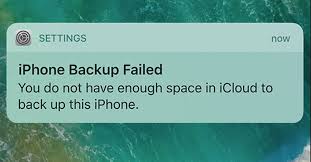
iСloud storage full? By default, Apple "generously" lets you have 5 GB of free space in iCloud. Most often this is not enough to back up the contents of the entire iPhone, including photos, videos, messages, etc. How to get more storage on iCloud, you ask. The answer is pay Apple a monthly subscription to buy more iCloud storage!
Even though the price is not actually that high, we are pretty sure you have better spending options. One way to solve this problem without buying anything from Apple is to free iCloud storage.
First, it is useful to find out how much iCloud storage space is still available to you and how big your next backup will be.
✔Here's how to see how much iCloud space your backups take:
- On iOS 11 or later: go to Settings > Your name > iCloud > Manage Storage > Backups.
- On iOS 10.3 or earlier: go to Settings > Your name > iCloud > iCloud Storage > Manage Storage.
✔Here's how to check how much free space in iCloud storage you have:
- On your device, go to Settings > Your name > iCloud.
Manage iCloud storage
How to clear iCloud storage
Now you know how much data you can delete from iCloud. So, let's get started! Here are the main points from our article How to free up iCloud space:
- Delete old iCloud backups
- Delete other data from iCloud storage
To free up more iCloud space, delete all your old backups, i.e. backups from devices that you no longer use.
To do that, on your iPhone go to Settings > Your name > iCloud > Manage Storage > Backups. Choose the backup and tap on Delete Backup.
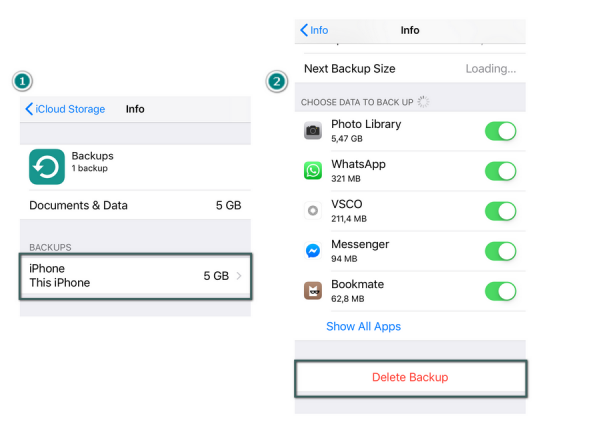
You have deleted some backups, but the error message persists? Delete large files you don't need.
Go to Settings > Apple ID > iCloud > Manage Storage. There you can get rid of the data that takes up too much space.
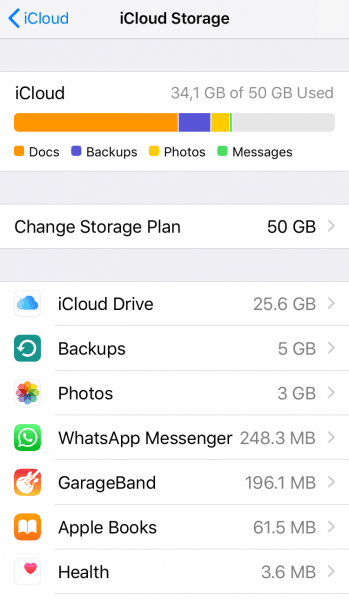
📷 As a rule, photos and videos take up the most space in your iCloud. Default setting of iCloud Photos ON means that all the photos taken with your iPhone will be stored in iCloud storage.
This means that original HQ photos are not stored on your device, only their thumbnails. Obviously, if you need your iCloud storage empty, those photos will have to be stored somewhere else. My personal preference is an external hard drive.
So how do you get your photos from iCloud to a PC or an external drive? There are a couple of things that should be mentioned at this point. Turning the iCloud Photo OFF is not that simple. If you have "Keep Originals" option checked, this will trigger a mass download of all of your iCloud photos to your device over your current Internet connection. If that's what you want to do, we suggest you connnect to Wi-Fi and free up TONNS of space on your device.
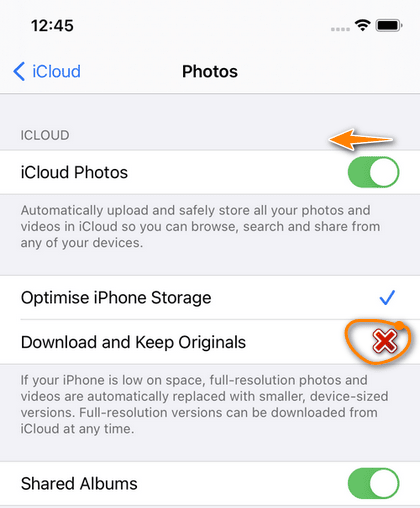
"Keep Originals" is a good option to keep turned ON if you are starting a fresh photo library to keep all of your images stored on the device. But when turning iCloud Photo OFF, to avoid a mass download from iCloud, make sure you have it unchecked. So now we just need to pull the images from iCloud to PC and empty the space. How can we do that – maybe iCloud.com can help us?
⚡ It turns out that iCloud only allows its users to download 1000 photos at a time, it simply will not let you select more.
Some of us photo enthusiasts count our photos in tens of thousands, we also have a limited amount of hours in a day we can dedicate to this task. Now, if you have 62000 photos in your iCloud, and also work full-time, that would probably take you anywhere from 20 to 60 days to finish this. But that's not all!
Upon downloading from the iCloud, the images loose their EXIF data, that is the information of when and where the photos were actually taken. So after the download all the photos have the same date of creation, which is the day you downloaded them.
Is it time for the facepalm yet? We say let Apple do the 🤦, we have a solution for you. We called it CopyTrans Cloudly. It downloads everything in one click, empties storage in one-click and keeps the EXIF data.
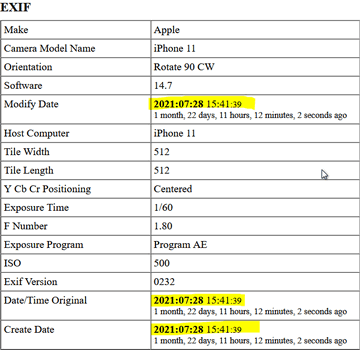
| CopyTrans Cloudly | iCloud.com | iCloud for Windows | |
| Downloading all photos | Downloads everything at once | Downloads only 1000 items at a time | Downloads everything at once |
| Preserving album structure | Yes | No | No (downloads by year) |
| Downloading originals | Yes | Yes | Not always |
| Incremental download of new photos (without creating duplicates) | Yes | No | No |
| Deleting all photos | Deletes everything at once | Deletes only 1000 items at a time | No |
| Retrieving permanently deleted photos | Yes | No | No |
| Speed (depends on the Internet connection speed) | 15-30 minutes for every 5 GB | Eternity | 1,5-3 hours for every 5 GB |
| Viewing and selecting photos before downloading | No | Yes | No |
| Using on a Mac | No | Yes | No |
| Uploading photos to iCloud | Yes | Yes | Yes |
Download CopyTrans Cloudly
Download and delete all photos from iCloud
-
To download all photos you have in iCloud at once, use CopyTrans Cloudly:
-
Run CopyTrans Cloudly. You will see a login screen. Enter your Apple ID and password.
-
If you have two-factor authentication enabled, make sure to allow the connection on your device:
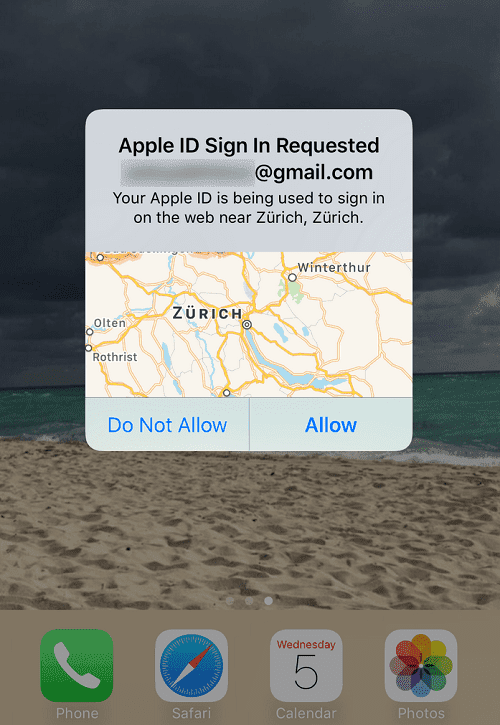
-
Enter the code you received on your device:
-
Wait until your iCloud library is loaded: you will then be taken to the main screen. To download all photos from iCloud, click "Download":
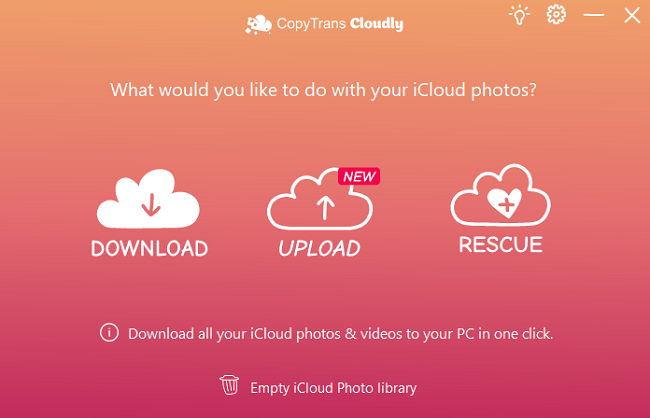
-
Select the destination folder:
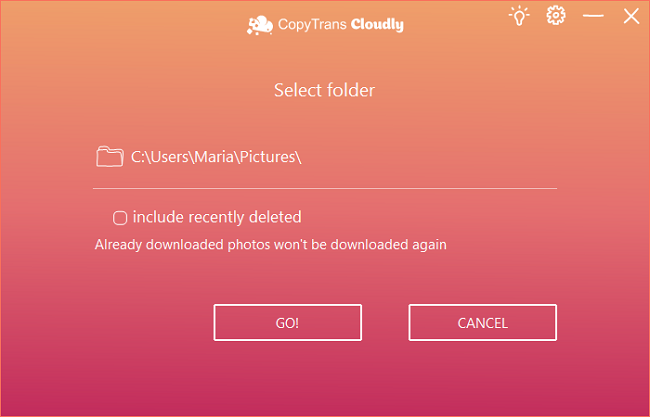
-
Voila! All you need to do now is wait until all your photos are downloaded.
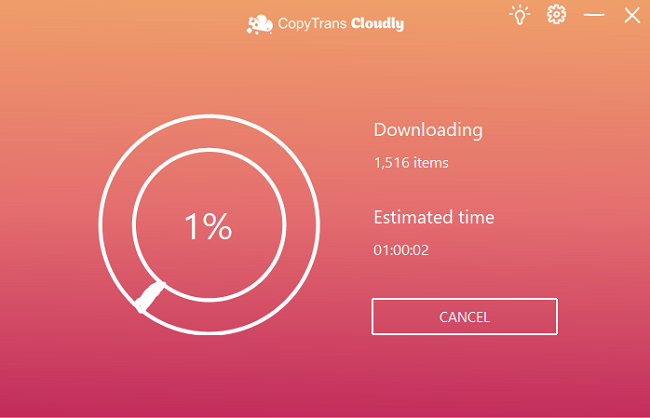
✒ TIP: You can also back up your iCloud photos to an external drive to save up space on your PC.
Now that you've downloaded all the photos and videos, you might want to delete everything from iCloud.
-
To delete all photos from iCloud, click "Delete":
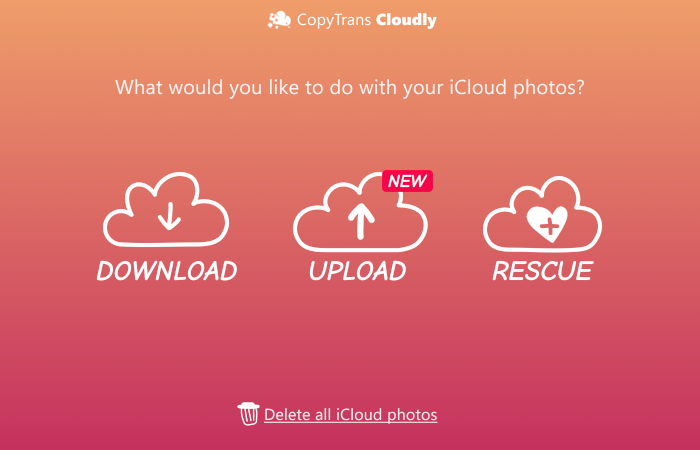
-
Now you will need to confirm that you want to delete ALL your photos from iCloud by ticking the checkbox.
-
Voila! All you need to do now is wait until all your photos are deleted.
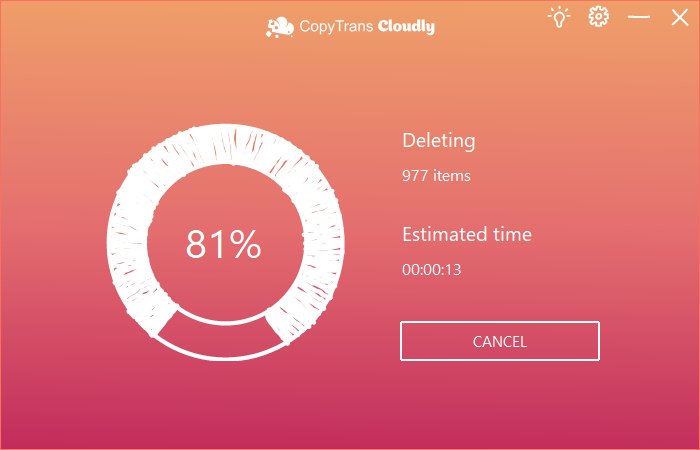
Back up only the data you need
By default, all of your app data is saved to iCloud upon every backup. But do you really need a backup for each app?
If not, you can turn off backups for this specific app and furhter reduce iCloud backup size.
Disable backup for unnecessary applications in Settings > Apple ID > iCloud> Manage Storage >Backup.
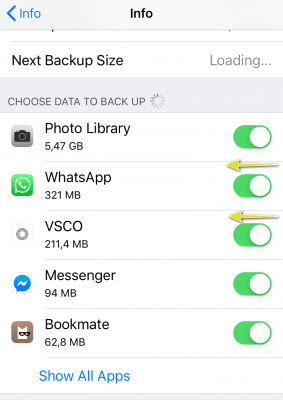
Note: All devices with the same Apple ID are sharing the same storage space. For example, if you have iPhone and iPad linked to the same iCloud account, your 5Gb of free iCloud storage will be shared between the two.
How to backup iPhone without iCloud
YouTube video guide:
Unlike iCloud, CopyTrans Shelbee can back up iPhone wherever you want on your PC. Choose any location with plenty of space and you don't have to worry about storage limitations.
-
Download CopyTrans Shelbee from the following page:
Download CopyTrans Shelbee -
Run CopyTrans Shelbee and plug in the iPhone. Click on "Backup".
NOTE: CopyTrans Shelbee is a dedicated iOS backup utility. It will never ask you to "erase and sync" when least expected as iTunes would.
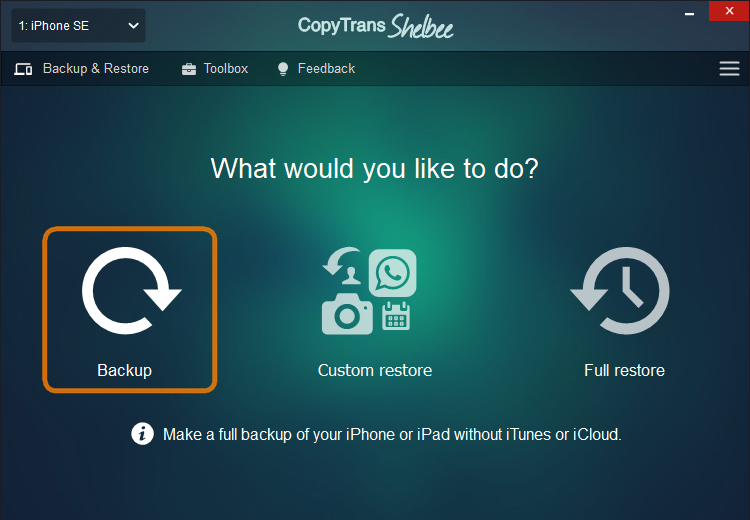
-
Select "Full backup".
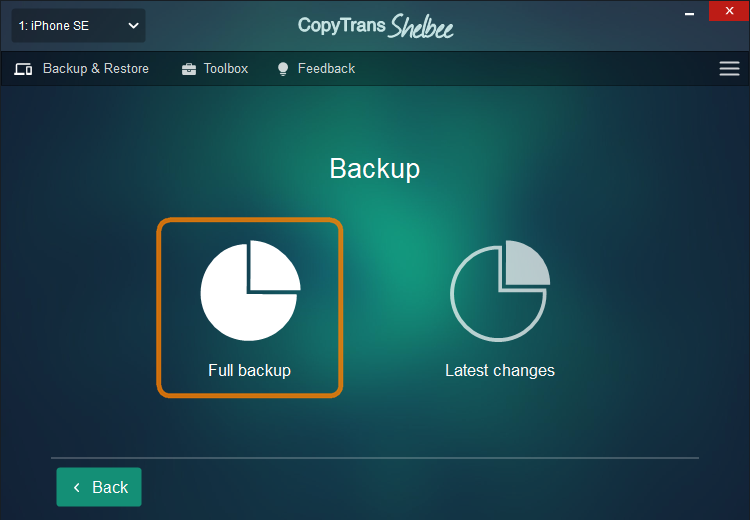
-
Now it's time to choose a convenient backup location. Neither iTunes nor iCloud will give you a choice. To select the backup location, click on the green pencil symbol on the right.
TIP: Be sure to select a drive with enough free space. iOS backups often take up several GBs. You can also uncheck the "Save the apps" checkbox because the apps take quite a lot of space. Also, make sure that you have a strong internet connection for a faster back up.

-
You can encrypt your backup: your iPhone needs it to save Wi-Fi passwords and other sensitive data. You can skip this step if you wish.
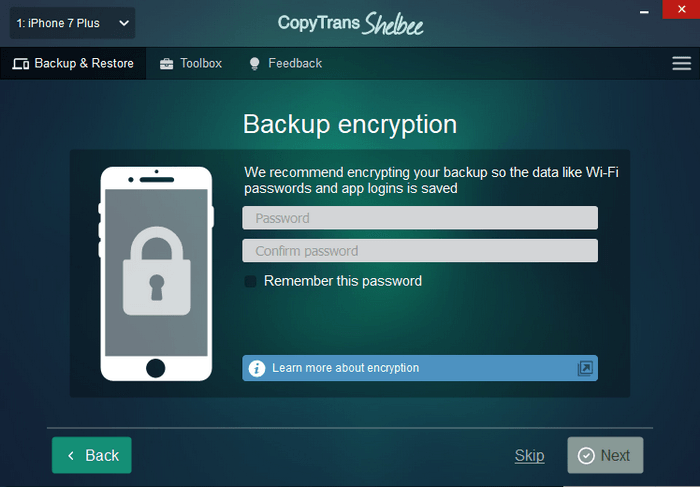
-
If you choose to save the apps: you will be asked to sign in to Apple Store. You can also skip this one 🙂

NOTE: Unlike iTunes, CopyTrans Shelbee will never overwrite your previous iPhone backup without permission.
-
The iPhone backup begins. CopyTrans Shelbee will perform a full backup of iOS settings, messages, contacts, apps, app documents, calendars, photos and videos from Camera Roll.
Learn more about what CopyTrans Shelbee backup includes.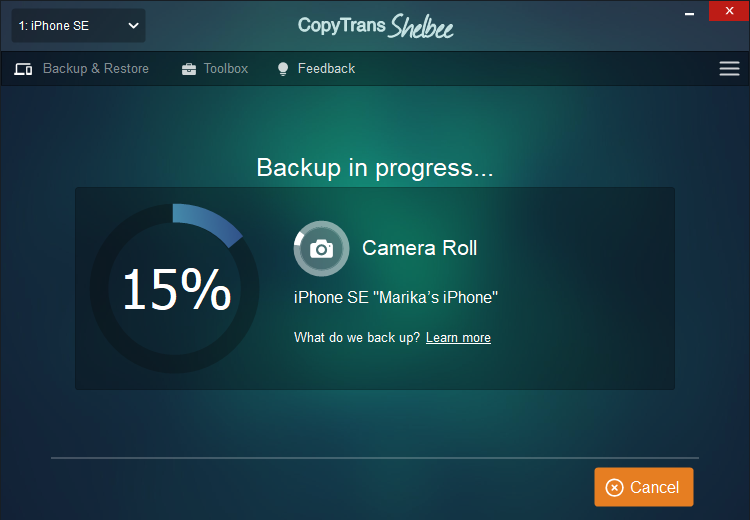
-
Once the backup is finished, click "Done".
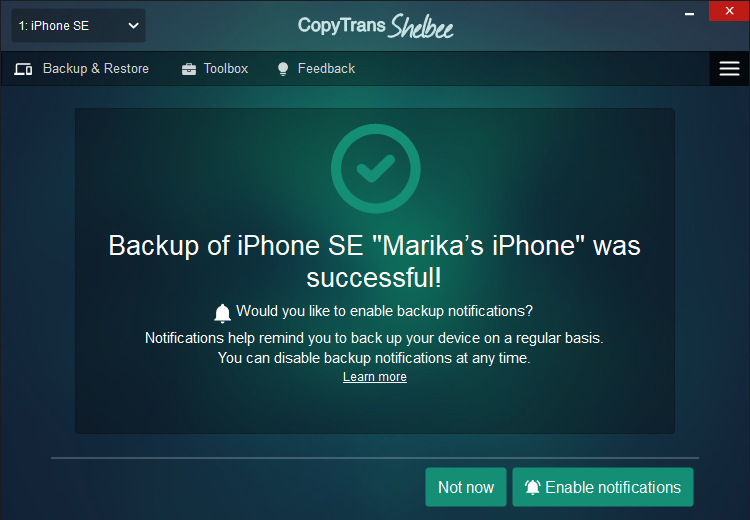
Great job! The backup is saved to the folder of your choice.
Download CopyTrans Shelbee
iCloud backup greyed out
✉ "I want to back up to iCloud. I go to Settings > Apple ID> iCloud >iCloud Backup, but "iCloud Backup" is greyed out! What should I do?"
The quickest alternative solution would be to back up using iTunes or other apps like CopyTrans Shelbee.
This will make sure you have a working backup saved. After you can focus on fixing the main problem to ensure the safety of your data with iCloud. It is highly recommended to use both online and offline backup methods, as they complement each other.
While many users have faced this "greyed out issue" after an update, there is still no word from Apple confirming that the update is actually the cause. If it is, Apple will probably try to fix it soon. If it isn't, there are a couple of other things that might cause the issue:
- Apple servers (or part of them) are down;
- iPhone is not connected to Wi-Fi;
- iPhone has a configuration profile installed;
- You are accessing your iCloud backup over a restricted network, such as a company network.
- Restart your iPhone
- Make sure you've turned off airplane mode
- Log in to your iCloud account again
- Check if iCloud has enough free space
- Try to back up later
- Delete your configuration profile on iPhone
- Turn off content and privacy restrictions
- Reset network settings
- Reset settings
- Turn on iCloud backup via iTunes
- Update iOS to the latest version
🔑 Try these steps to make sure you've done everything:
We have a guide on how to restart your iPhone.
This is a rookie mistake, but it never hurts to check. See if the airplane mode is on in the iPhone settings.
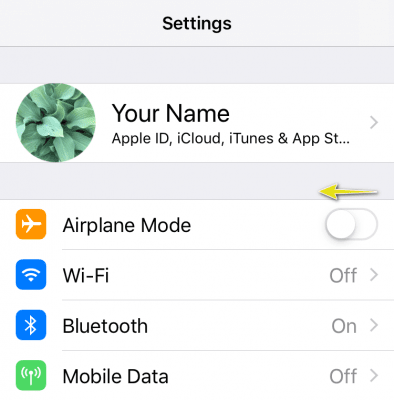
You can also disable it from the Control Center. To do so, on iPhone X or later with iOS 12 or later, swipe down from the upper-right corner of the screen. On other devices, swipe up from the bottom of the screen. Then tap the airplane icon.
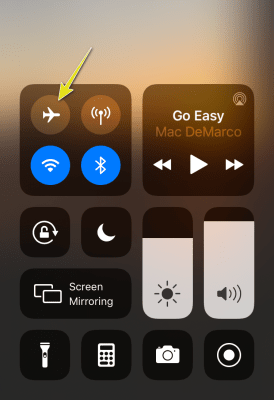
In some cases, logging in again fixes iCloud connectivity issues. Tap Settings > Apple ID > Sign Out. Then tap "Sign in to iPhone" in the Settings and follow the instructions.
To check how much iCloud space you have, go to Settings > Apple ID > iCloud.
Just check on the issue a bit later to see if that was a server problem.
Configuration profiles are commonly used on devices provided to company employees. You may be asked to install a configuration profile that was emailed to you or downloaded from a web page. Such profiles can cause Wi-Fi and configuration issues.
You can check the installed profiles in Settings > General > Profiles. You can also delete the profile there.
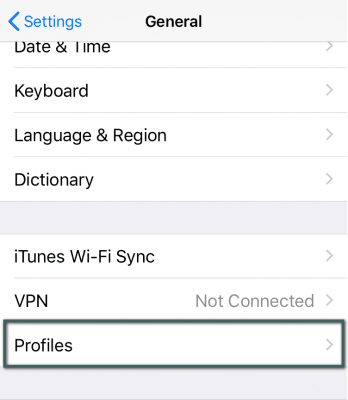
Go to Settings > Screen Time > Content and Privacy Restrictions. Then disable "Content and Privacy Restrictions".
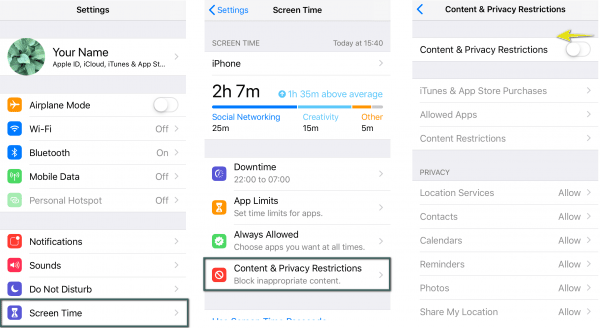
Resetting network settings resolves network-related issues such as being unable to connect to Wi-Fi. Tap Settings > General > Reset > Reset network settings.
Another way to fix iCloud backup failure is to reset iPhone settings altogether. The system settings (Wi-Fi network password, etc.) will be deleted, but the files on the iPhone (application data, etc.) will stay untouched.
Go to Settings > General > Reset > Reset All Settings. Back up to iCloud after the iPhone restarts.
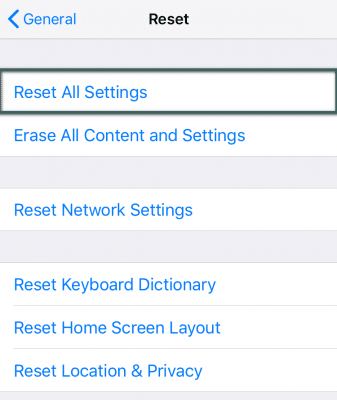
Connect your iPhone to PC and launch iTunes, then click on the iPhone icon and select iCloud. After that, disconect your iPhone from PC and make an iCloud backup as usual.
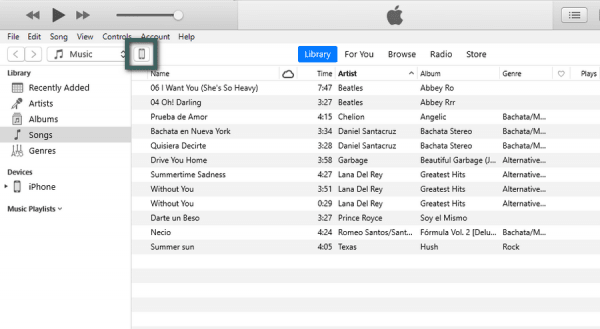
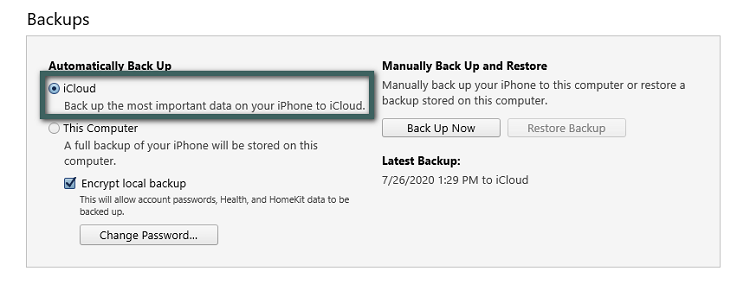
Sometimes the problem is caused by an old iOS version. To update your iOS, go to Settings on your iPhone, tap on General > Software Update > Download and install. If you see the message "Your software is up to date", you have the latest version.
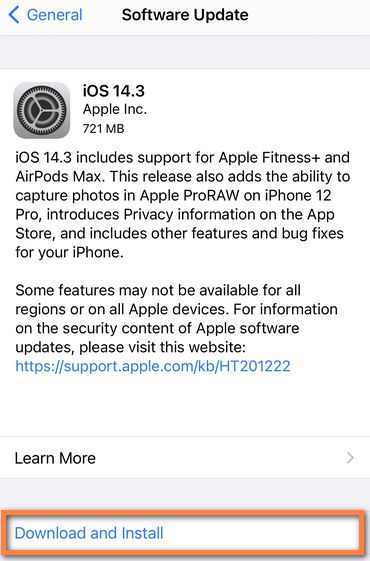
iCloud Backup Failed
Conclusion:
☁ Now you know how to effectively manage your iCloud storage in case iCloud backup failed. We also discussed how to back up iPhone without iCloud or iTunes. Hope it has been helpful!
If you have any related questions, leave them in the comment section below.
How To Backup Iphone Without Icloud Space
Source: https://www.copytrans.net/support/there-is-not-enough-icloud-storage-available-to-backup-iphone/
Posted by: selfancel1979.blogspot.com

0 Response to "How To Backup Iphone Without Icloud Space"
Post a Comment